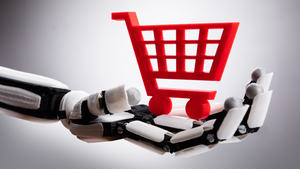Who's Buying and Who's Selling What CBD ProductsWho's Buying and Who's Selling What CBD Products
Understanding the emerging CBD category is crucial for retailers. Still in its nascent stages, the CBD market could be a boon for retailers if they understand the products that sell and who is buying them.

Last year marked the first full year of legal hemp in the United States after the passing of the 2018 Farm Bill. But those hoping for a clear picture of where the legal CBD market is headed may have to wait, thanks in large part to uncertainty from the U.S. Food and Drug Administration (FDA), as well as at the state and local levels.
“These are the early days of CBD, reminiscent of when energy drinks started,” says Christian Patino, executive vice president of CBD maker Day One, Los Angeles. “There’s a lot of misunderstanding.”
That said, retailers have a lot more clarity on the category heading into 2020. Major operators such as Whole Foods Market, Wegmans and Kroger jumped in; at least some CBD brands started to emerge as leaders; and market research companies such as Nielsen, IRI and BDS Analytics have dedicated resources toward capturing both retail sales data and information on the CBD consumer.
All of this has been good news for the grocery channel, according to Miguel Martin, president and CEO of Natick, Mass.-based Reliva, a top-selling CBD brand.
“Right now, the No. 1 retail outlet in terms of sales per store per week, hands down, is Whole Foods,” he says, citing the high-priced selections, complete endcap displays and manned CBD sections at Whole Foods. “Wegmans also does exceptionally well.”
Martin says most other grocery retailers are “still trying to find their way” in this new category. Here is a recap of the marketplace to understand why this category may be important to grocery retailers.
The Numbers
Even with major researchers tracking CBD sales, it’s difficult to get an accurate picture of the category due in part to the nontraditional ways CBD is sold. Much of the category is still relegated to online sales and specialty stores (including cannabis dispensaries).
Nielsen put total 2019 U.S. CBD sales at $900 million to $1.2 billion last year. BDS Analytics put that figure at $1.9 billion.
The opportunity is only expected to grow in the next five years: Nielsen predicts a $6 billion CBD market by 2025; BDS Analytics anticipates it will surpass the $20 billion mark by 2024.
Last year offered clarity not just on sales but also on what types of CBD consumers are buying, which channels are excelling at CBD and insights into the CBD consumer. Here’s how that data breaks out:
CBD Forms: For food, mass and drug (FMD) outlets, Nielsen showed topicals as the clear winner (49% of CBD sales), followed by tinctures (31.6%), beverages (11.7%) and gummies (1.1%). “Other” forms made up 6.6% of sales at food, drug and mass merchant retailers last year. The topicals figure is likely a little inflated because many mainstream retailers are offering only this noningestible option out of legal caution, Martin says. “So you’re going to see the segmentations toward topicals go that way,” he says.
Who’s Selling: Analysis by BDS Analytics shows 65% of 2019 CBD sales happened at cannabis dispensaries. In terms of how mainstream retail channels are doing, Nielsen has 39% of sales coming from CBD-specific sites (online and brick-and-mortar), 33% from specialty retail, 12% from online retailers selling a variety of categories and 16% from traditional retail (food, mass, convenience and drug). About $24 million of the $900 million-$1.2 billion CBD market occurred at mainstream retail last year, Nielsen says. However, BDS Analytics forecasts that number to grow to $13 billion by 2024, or about 63% of total CBD sales.
Who’s Buying: Consumer survey data shows a market ripe for trial. Nielsen predicts 15% of adults have tried CBD, while surveys from High Yield Insights show 2 in 5 adults are interested in trying CBD. As for the current CBD consumer, the market spans all ages, genders and financial backgrounds: According to BDS Analytics, the average age of a CBD consumer is 43, the market is 55% male and 45% female, and 50% have full-time employment. Surveys by Nielsen show that one-third of CBD consumers have children at home, and three-quarters have pets.
About the Author
You May Also Like






